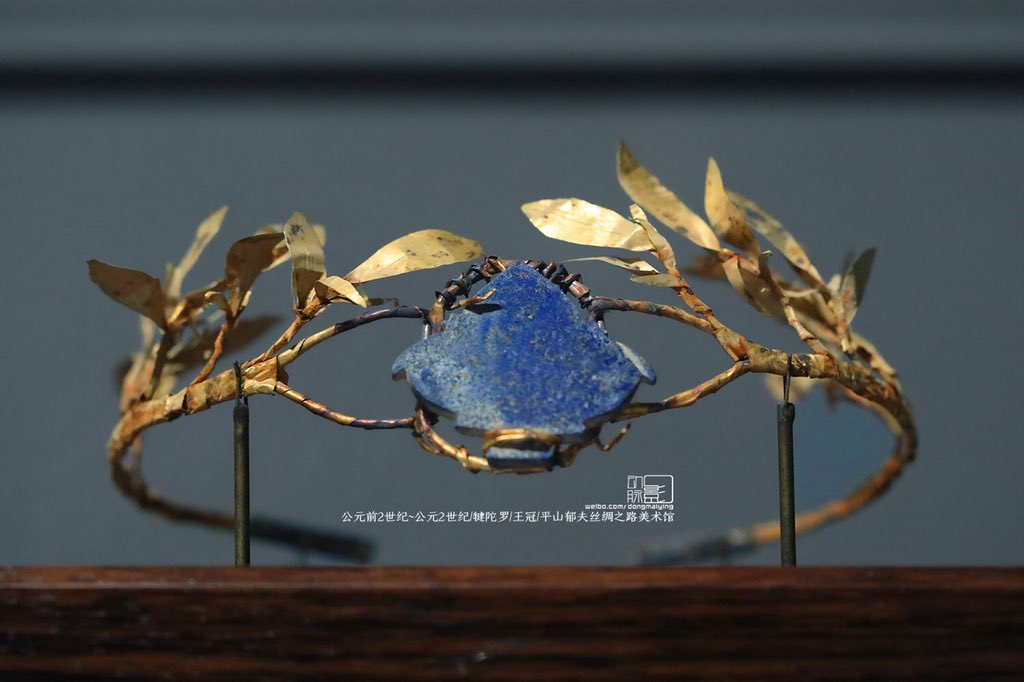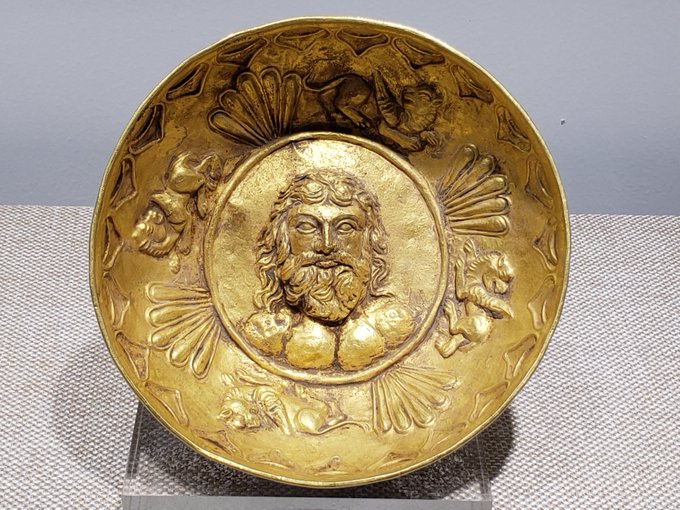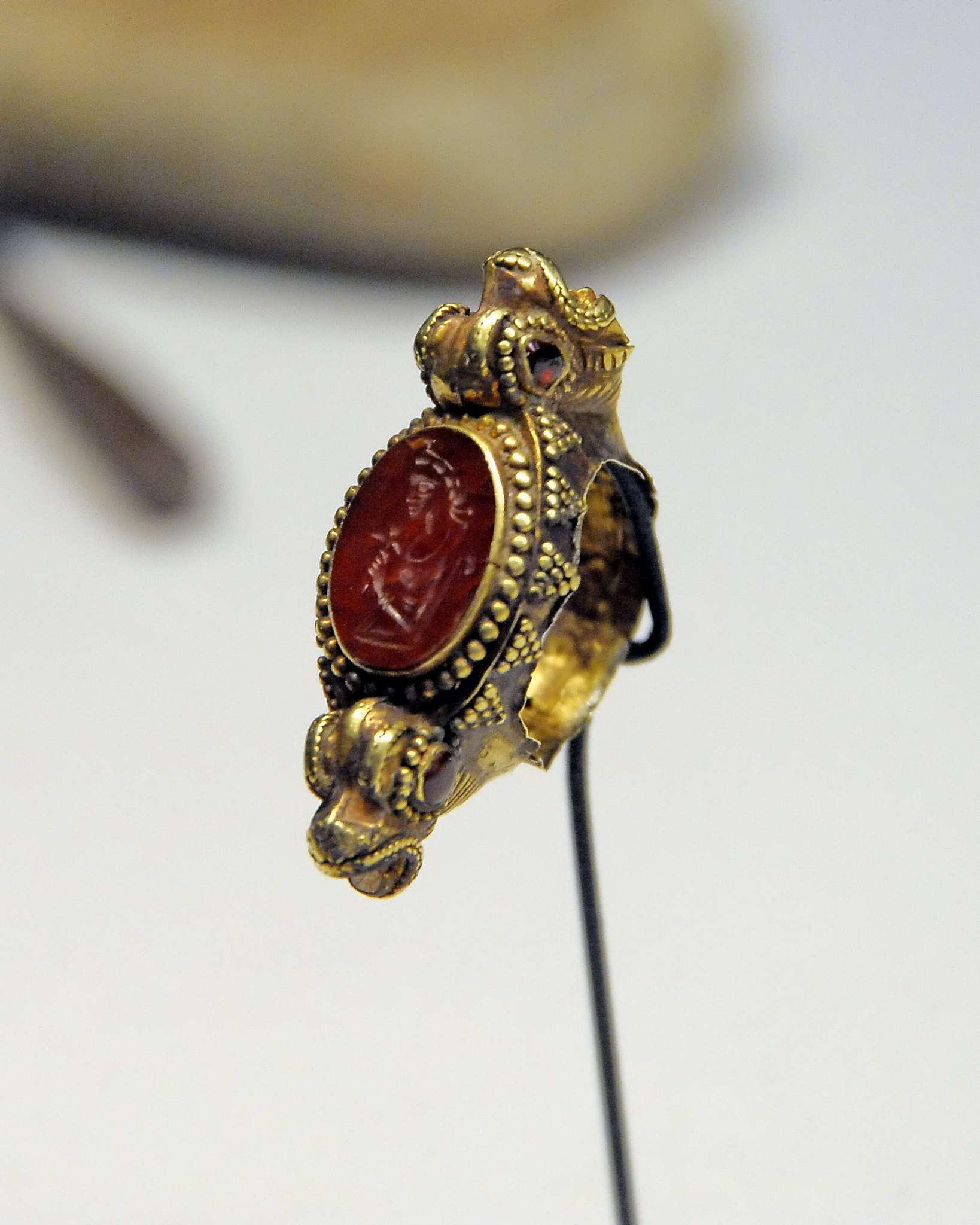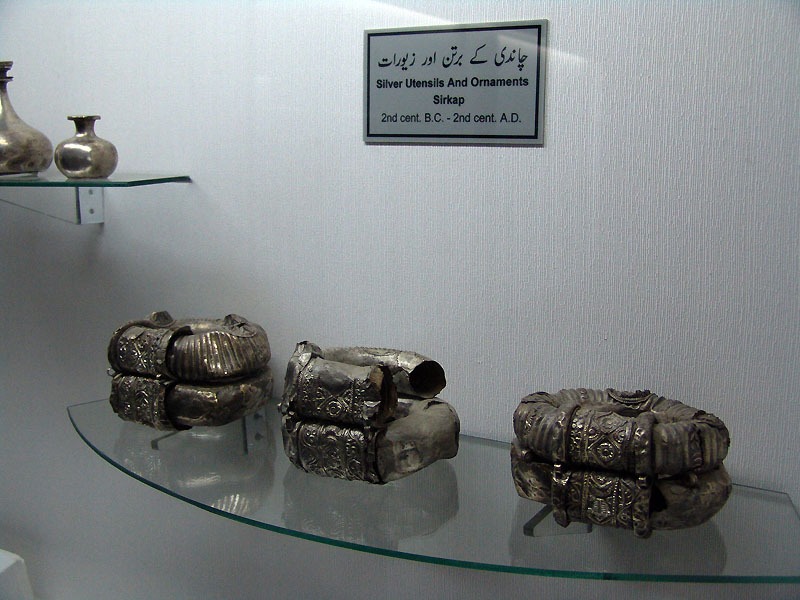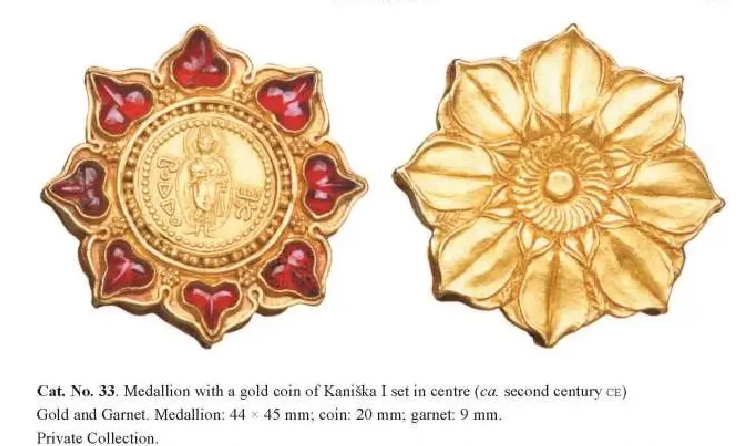Notes on the bracelets described by Osmund Bopearachchi and Paul Bernard in the article “Two Greek Bracelets with Greek Inscriptions found in Hellenised Central Asia”.
The article is about two gold bracelets, which are currently in a private collection but they were examined by authors.
“Both passed through Pakistan, which restricts their find-spot to this country and to Afghanistan, meaning to the territories occupied by the Greeks during the three last centuries before our era, between the Oxus and the Indus”
Both bracelets have a form of coiled serpents, one with a snake head, second with a head of a marine monster.
Gold jewelry in the form of snakes became widespread in the classical times as rings, and bracelets for arms and legs. This type of jewelry reached its peak in the Hellenistic era, when was often decorated with colored stone inserts. [E. Arsentyeva, O. Gorskaya]
Bracelet with a snake head has eyes inlaid with blue-green glass. Total length of uncoiled bracelet is 53 cm.




Bracelets from the Stathatos collection Nos. 258/9 and 256/7 mentioned in the article.
From:
D. Ignatiadou, A. Chatzipanagiotou, “Jewellery uses and symbolism, from the Geometric to Roman period”, in M. Lagogianni-Georgakarakos (ed.), The Countless Aspects of Beauty in Ancient Art, Catalogue of an Exhibition, Athens 2018, 265-281 https://www.academia.edu


https://cycladic.gr
Gold ring, Greek Hellenistic, 2nd century BCE
“This type of rings first appeared in the 4th c. BC but enjoyed wide distribution all over the Hellenistic world during the 2nd c. BC.”
Ketos
uncoiled length: 86 cm; diameter: 6.8 cm;
average width of spiral: 0.7 cm; the crocodile’s head, ketos?





Bracelet with a ketos examined by O. Bopearachchi
HELLENISTIC GOLD BRACELET WITH SIGNATURE OF ITS MAKER MESTOR
https://oliverhoareltd.com/object_eotas15/134-hellenistic-gold-bracelet-signature-maker-mestor/
Afghanistan, 2nd century BC
Size: coil 86 cm long, diameter 6.8 cm
Published: O. Bopearachchi, C. Landes, C. Sachs, ‘De l’Indus à l’Oxus Archeologie de l’Asie Centrale’, Monpellier 2003, no. 91 a–b
Private collection, U.K.

A ring in the shape of a serpent [ketos], made of gold with amethyst from the Mesambria necropolis, Bulgaria; 3rd-2nd C BCE.

The Great Epochs of Messambria
Ivan Karajotov 2004 https://morskivestnik.com

https://bnr.bg/sr/post/100691339
A ring in the form of a coiled sea monster from Asia Minor, 1st century BCE. Gold and glass. Hermitage ГР-8403 [GR-8403]
“The ring is made of a thick strip of gold twisted into a spiral (4 turns). The upper end is in the form of the body and head of a sea dragon [monster], the lower end is in the form of a tail with a fin. The details of the dragon skin, head and fin are embossed and completed with carvings. Between the head and tail there is an oval glass insert, enclosed in a frame made of gold plate and a thin strip. Two imprinted dolphin figurines are soldered above and below the insert.”

Ring diameter 2.4 cm;
glass insert 0.5 × 0.8 cm
Gold 950; weight 8.88 gram
“Ancient Jewellery from Private Collections. Rings”
By Elena Arsentyeva, Olga Gorskaya

After Michele Minardi
Read more >> http://colorsandstones.eu/2022/10/30/tomb-of-opaka-sabaleida-apulia-magna-graecia-3rd-2nd-century-bce/

Mosaic with a ketos (sea monster – Latinized as cetus) found at Caulonia (Monasterace) in the Casa del Drago, 3rd century BCE. https://www.worldhistory.org


source https://erenow.net/ancient/the-greeks-in-asia/7.php
also https://cms.dankook.ac.kr
and
Libation trays from Gandhara, Harry Falk https://www.academia.edu
For more images of ketos see >> https://www.thesaxlproject.com/assets/Uploads/00-Cetus-master-2-August-2017-.pdf
- Osmund Bopearachchi (2015), From Bactria to Taprobane https://www.academia.edu
- Osmund Bopearachchi, Paul Bernard, Deux bracelets grecs avec inscriptions grecques trouvés dans l’Asie centrale hellénisée. In: Journal des savants. (2002), N° pp. 237-278 https://www.academia.edu
- Osmund Bopearachchi; When West Met East Gandhāran. Art Revisited. vol.II, p.217
https://www.academia.edu/104677334/When_West_Met_East_Gandh%C4%81ran_Art_Revisited_vol_II - The Hellenistic Chorasmian Ketos of Akchakhan-kala; Michele Minardi https://www.academia.edu
- HELLENISTIC PHALERAE FROM THE BURIALS OF THE NOMADS OF ASIAN SARMATIA, M. Treister https://czasopisma.marszalek.com.pl
- Figurative representations on the phalerae found between the Ural, the Caucasus and the Balkan mountains (2nd-1st century BC); Valeriu Sîrbu, Vitalie Bârcă https://www.researchgate.net
- Monsters of Military Might: Elephants in Hellenistic History and Art; Branko F. van Oppen de Ruiter
Arts 2019, 8(4), 160; https://doi.org/10.3390/arts8040160 - Libation trays from Gandhara, Harry Falk https://www.academia.edu
- Ketos and sea horse http://cabmedlimc.huma-num.fr/exhibits/show/monstre/ketos-cheval
- “Ancient Jewellery from Private Collections. Rings” St Petersburg, The State Hermitage Publishers 2019, pp. 80-81
By Elena Arsentyeva, Olga Gorskaya


